QuestionQUESTION: HELP!! My name is Brian, and I have 2 hamsters. My one hamster has become very thinner than it used to be, and near the anal area, its all black and wet (looks like poop stuck there) and its back legs are really weak. Its ALWAYS sleeping. Its really weak that it can barely eat or drink or even walk. I picked it up and put it near water and it tried drinking but it couldn't, as if he has no clue where she was. My other hamster is actually avoiding it, they used to sleep together and now they avoid each other. Oh, and also, its right eye is always shut and I can see it kind of watery, and the left eye is about half way open. What's wrong with it, and what should I do??
ANSWER: Brian,
I know you are upset over this and I understand that, but I am not a hamster expert. I have a link for someone in here that is, so copy and paste your question to her. Her name is Heather and she has a lot of experience with hamsters.
Here is her link:
http://www.allexperts.com/ep/2005-34607/Gerbils-Hamsters/Heather.htm
It sounds like your hamster has 'wet tail' but I really don't know much about it. You could also look at this site and see if you can find something that matches the same symptoms:
http://www.petwebsite.com/hamsters.asp
That is all I can do for you- I am truly sorry about your little girl. Post to Heather and see what she can tell you.
let me know what you find out.
---------- FOLLOW-UP ----------
QUESTION: She does not answer anything about hamsters dieing. Do you know anyone else, please?
AnswerBrian,
I am sorry she hasn't answered you. I did some research and found this article on wet tail. Unfortunately it sounds like what your little girl might have.
Here is the article. If you can call a vet tomorrow and get her in you might be able to save her. Do you have any type of antibiotics at home from another pet? The article says that antibitotics are what she needs if this is what she has. Is there a pet store near you that you could take her too?
Here is the article:
Wet Tail (Regional Enteritis, Proliferative Ileitis) in Hamsters
( http://www.peteducation.com/article.cfm?cls=18&cat=1799&articleid=622)
Holly Nash, DVM, MS
Veterinary Services Department, Drs. Foster & Smith, Inc.
Healthy young hamsters 'Wet tail' is a very serious intestinal disease of young hamsters, which often causes death. It gets its name because the main symptom is diarrhea, and affected hamsters often have wet and dirty tails. It is caused by bacteria called Lawsonia intracellularis, which can also cause disease in swine, horses, dogs, ferrets, primates, and other animals. This disease does not appear to be transmissible to people.
Wet tail is more commonly seen in hamsters of weaning age (3-6 weeks old), but hamsters of all ages are susceptible. Hamsters sold in pet stores generally have just been weaned, so 'wet tail' may occur soon after the hamster is taken home. All breeds of hamsters can develop wet tail, but long-haired 'teddy bear' hamsters are most susceptible.
What are the symptoms of wet tail?
Hamsters with wet tail are generally lethargic with a loss of appetite and generally stop grooming. They have a very fluid diarrhea, and develop a wet, soiled, and matted area around the anus and tail. The diarrhea causes them to become dehydrated, so their eyes may appear dull and sunken. They may sit 'hunched up' and be irritable because of the abdominal discomfort. In serious cases, blood may be seen in the diarrhea or around the anus, and/or the rectum may protrude out of the anus because of the constant straining.
Wet tail is a very serious disease, and hamsters with the above symptoms should be examined by a veterinarian immediately.
How is wet tail treated?
Antibiotics are given to kill the bacteria. Supportive care is given including subcutaneous fluids to correct the dehydration, antidiarrheal medication to alleviate some of the symptoms, and the hamster is kept warm and clean. Even with treatment, most hamsters die of this disease, often as soon as 48 hours after the onset of initial signs.
(from another article:
For therapy antibiotics like enrofloxacin, trimethoprim-sulfa or tetracyclines are used.)
Can wet tail be prevented?
Wet tail can not necessarily be prevented, but the risk of a hamster acquiring this disease can be reduced. Hamsters should be kept in a clean environment, since transmission of the bacteria from the mother or other hamsters to the young occurs when the young eat fecal-contaminated food or water. Before acquiring a young hamster, ask the source about the occurrence of wet tail in their facility. Choose your hamster from a line of hamsters that has no history of this disease. Avoid stressing young hamsters when moving them to a new environment, e.g.; limit handling them the first few days, keep the hamsters on the same food they were eating for a few days and then slowly switch to a new food if necessary, etc.
I am sorry that is all I can do. I hope you can find someone to take her to tomorrow. I am not sure she will make it to Monday or Tues from what you said. It has a high mortality rate.
I hope you get her to some one tomorrow but please let me know if you do and how she does.

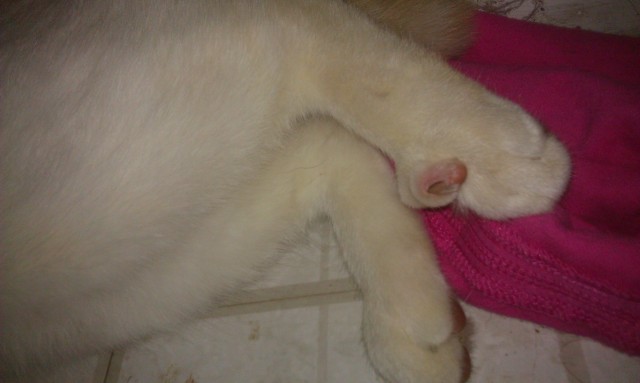 Cat toe broken? dislocate? Urgent!
Question
Milos toe
First of all, I know that a v
Cat toe broken? dislocate? Urgent!
Question
Milos toe
First of all, I know that a v
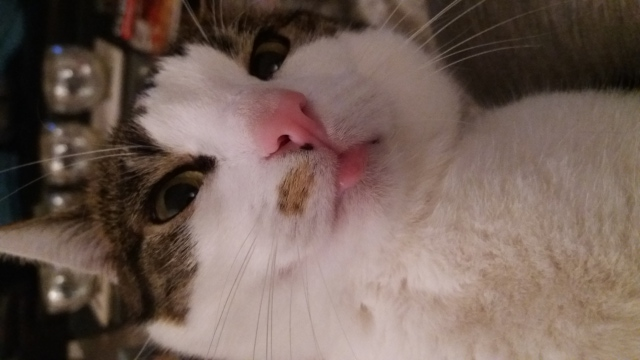 cats lip
Question
swollen lip
Hi there. I dont know if th
cats lip
Question
swollen lip
Hi there. I dont know if th
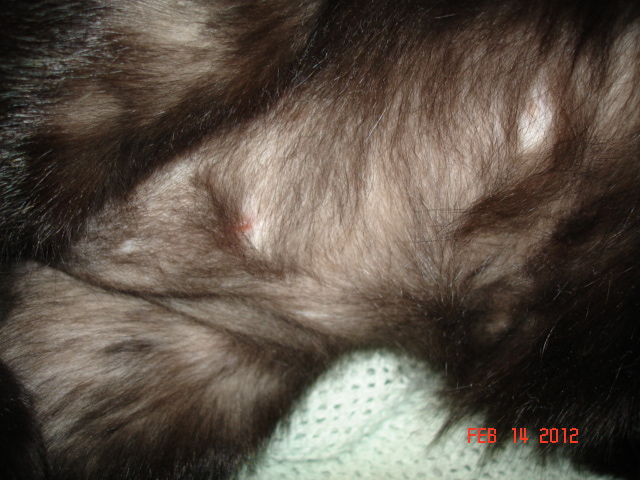 Dull Fur & Flaky Skin
QuestionQUESTION: Can you give your cat the human Omega
Dull Fur & Flaky Skin
QuestionQUESTION: Can you give your cat the human Omega
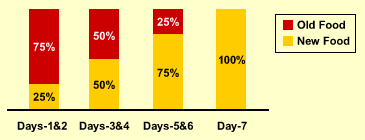 regurgitation
QuestionMy Cat is 4, indoor, and quite small with short
regurgitation
QuestionMy Cat is 4, indoor, and quite small with short
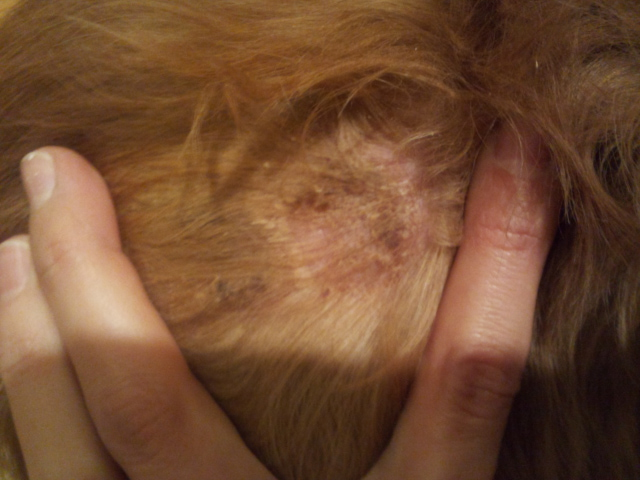 Sores on body
QuestionSore
QUESTION: Do you have any idea what
Sores on body
QuestionSore
QUESTION: Do you have any idea what